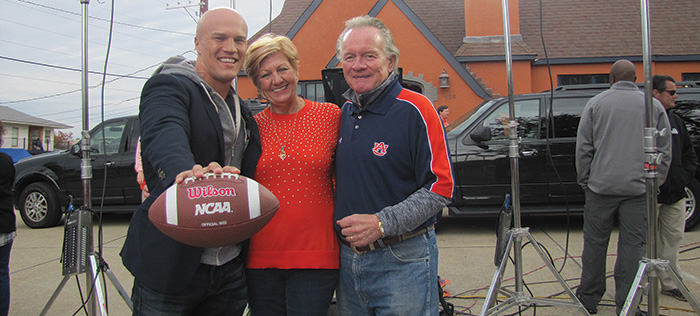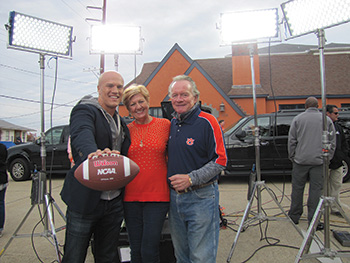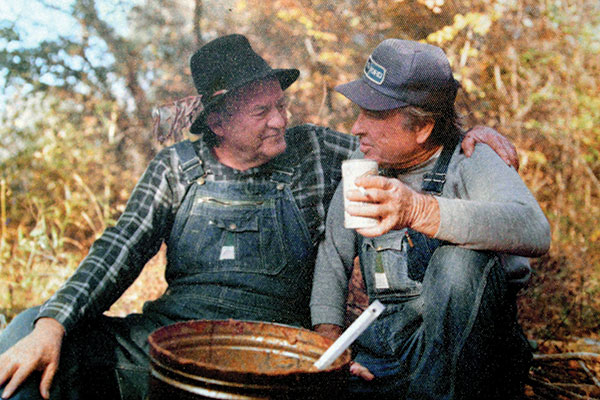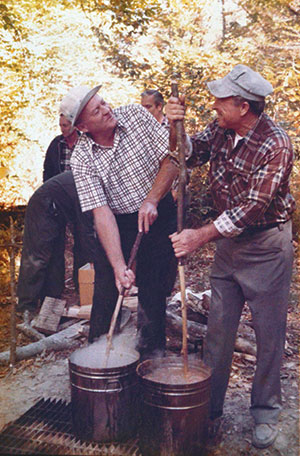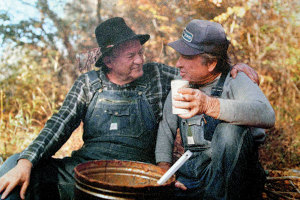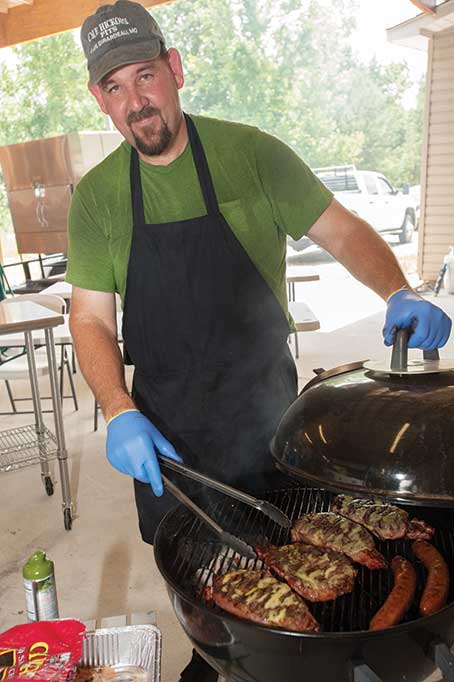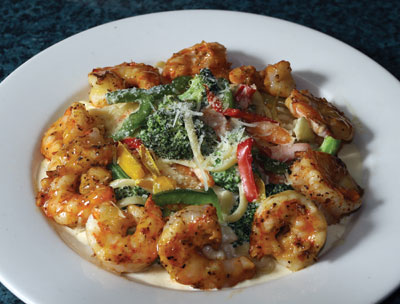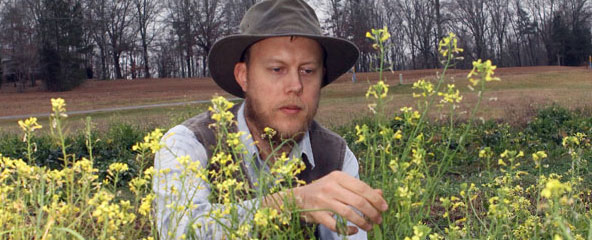Story by Carol Pappas
Photos by Mike Feline, CNN HLN
and Carol Pappas
When Pell City’s Sandra Murray talks about how an Auburn game day tailgate party turns into a CNN event, she laughs and says, “When you’re not there, you get nominated.”
She and her husband, Dr. Ed Murray, have been hosting home-game weekend parties at their “Auburn House” for years. The house itself attracts plenty of attention. After all, it is appropriately painted orange and blue and sits conspicuously on a knoll overlooking campus and Jordan Hare Stadium.
In October, Ed’s aunt had passed away, and for only the second home game in 20 years, they were going to miss the party. So Sandra traveled to Auburn on Wednesday, set up everything for game day and asked friend Cindy Goodgame to host.
That weekend, she got a text from Cindy simply saying, “Call me when you can.” When she did, Cindy told her that someone from CNN tapped on the window and asked if they could film from the parking area of the house with the stadium for the backdrop. Oh, and they might film in the house.
Sandra said OK. Then another “oh” moment followed with Cindy adding, “And they need a woman to barbecue and compete in a cookoff, and I told him you would.”
“I said, What!,” And the rest, they say, is history.
Turns out CNN produces the HLN Tums Tailgate cookoff, which is set at various campuses across the nation during football season. The man at the window was producer Mike Phelan.
CNN Crews, as part of the cookoff series, have been at the Clemson-Notre Dame and Ohio State-Michigan State games. On this particular weekend, they came for Auburn-Ole Miss. The semi-finals will be in Atlanta for the SEC Championship game and the finals, in Glendale, Ariz., for the National Championship game.
Being a good sport, a good cook and enjoying the fanfare of a good tailgate party, Sandra obliged, cooking her original recipe, Cajun-fried chicken drumsticks with a Bulleit Bourbon sauce, for the competition. “It was only the second time I had cooked it,” she said. And it was only later that she learned famed chef Chris Hastings and Auburn’s Acre Restaurant use the same high-rye, award-winning whiskey in their own recipes.
At 5 a.m. on Friday and 4:30 a.m. on Saturday of the game weekend, a CNN satellite truck and other vehicles pulled up to the house and started unloading – lights, cameras, monitors. “Watching them set up was a lot of fun,” she said.
CNN and HLN sports anchor and correspondent Coy Wire, a former Stanford and NFL player, went over his lines. Cheerleaders from Auburn and Ole Miss arrived. Auburn Tiger mascot, Aubie, joined the fun. So did the Auburn Band. A crowd gathered. Lights, camera, action. “The whole progression was phenomenal,” Sandra said. “It was fun to work with them.”
 She competed with Jeff and Jeremy Alexander of Athens, Ala., whom the Murrays have known for years. They own a game-day condominium behind their Auburn House. Coincidentally, they are professional barbeque cookoff competitors. They won the Sloss Furnace competition in recent months.
She competed with Jeff and Jeremy Alexander of Athens, Ala., whom the Murrays have known for years. They own a game-day condominium behind their Auburn House. Coincidentally, they are professional barbeque cookoff competitors. They won the Sloss Furnace competition in recent months.
While Sandra’s drumsticks came in second, she wasn’t disappointed at all. “It was a lot of fun,” she said. “I’m tickled for them. It was good promotion for them.” The Alexanders’ winning dish cooked to order was a brisket. They also made a “Fatty” – Italian sausage taken out of the casing, flattened and topped with a mixture of peppers and onions, rolled up and wrapped in a bacon weave. It is smoked and then sliced into pinwheels. Hence, the perfect moniker.
“They’re serious,” Sandra said. For her, it was simply part of being a gracious hostess, even if her nomination came in absentia. The Murrays love to entertain, and the house they bought in 2004 underscores that notion.
It is the perfect game-day house. They completely redid the interior in 2005 – orange and blue motif and Auburn themed throughout. Mounted televisions are found in almost every room.
“When we found out Pella did navy-blue windows, we said, ‘Here we go!,’” she said, relating the story behind an orange and blue house. “When the crew was painting the house, people would pass by, blow their horn and yell, ‘War Eagle!’”
The house is comfortable and inviting – just like the Murrays. They have used the house for fundraisers and awards. The Pell City Cheerleaders were there for the Idaho game as part of an auction-winner event. “It’s for fun. That’s what it’s all about,” Sandra said.
And in typical, welcoming Murray fashion, she adds, “You know what we say: ‘One invitation lasts a lifetime.’”














